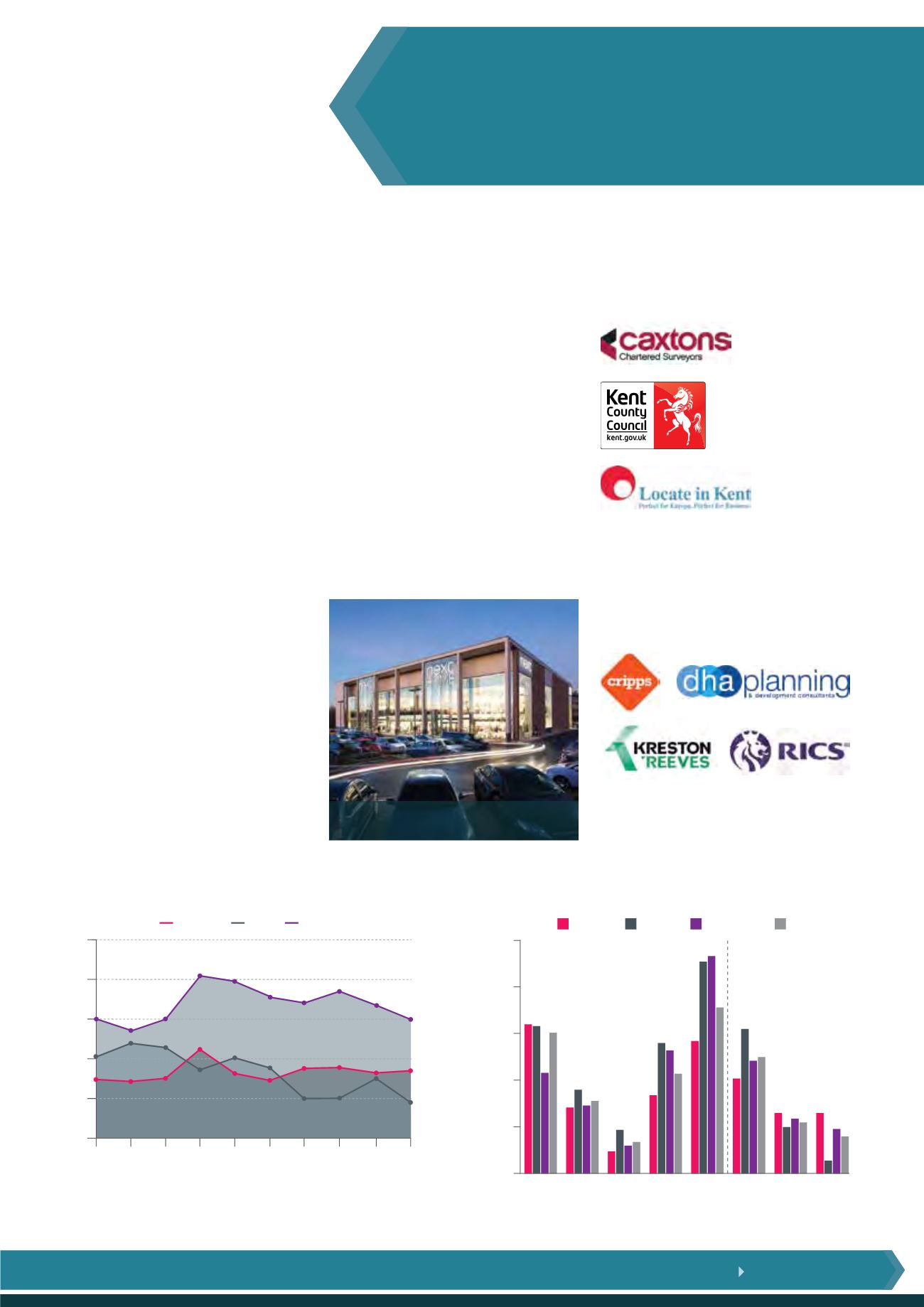

73
Growing the Kent Economy 2016
/
17
This broadening in investment horizons
in the search for value has amplified
demand for property assets in Kent.
The buoyancy and increasing diversity
of the county’s office market has
attracted particular attention; as a result
the Kent - South East yield gap has
narrowed sharply. The average office
yield in the County fell to 8.3% at the
end of 2014, its lowest level since 2007.
Over the same period, the investment
yield for industrial and retail property in
Kent hardened to 7% and 6% respectively,
tracking movements in the south
east average. Meanwhile, the average
yield for retail warehouse assets in the
County fell to 5.9%, equal to the South
East average, reflecting the strength of
this market.
This is an excerpt from the Kent Property
Market Report March 2016 compiled by
Locate in Kent, Caxtons and Kent County
Council; for the full report see www.
locateinkent.com/kpmrmarch16.
The Kent Property Market is also supported
by dha planning, Kreston Reeves, Cripps
and RICS.
Contributory sponsors:
stabilised, tempered in part by the
challenges facing the supermarket
sector. Demand and activity will remain
focused on strategic positioning and
relocations. Kent has proved a beneficiary
of distribution sector growth with
strong demand for well located
developments coming to the market.
The manufacturing sector continues to
struggle in the face of a weak export
market and this is reflected in the demand
for industrial property. This situation will
persist until robust global demand returns.
Despite this, Kent’s industrial market
performed well in 2014 and recent
lettings suggest this buoyancy persists.
Rents rose by 2.5%, ahead of both
inflation and rents achieved in 2013.
Investment market
The UK property sector has attracted
high levels of capital investment over
recent years. This has placed downward
pressure on yields across the market,
although the IPD All Property initial
yield has settled at around 5%. The
average property yield is low by historical
standards, but stands approximately 3%
above the yield on 10 year gilts.
While prime markets, particularly in
central London, were the initial focus of
attention, the improved economic and
occupier environment has spurred
investors to seek out markets with rental
growth prospects, including those with
value adding opportunities. There has
also been a willingness to take on more
risk. The appetite for development, and
more significantly its funding, has
returned in tandem with a small, but
notable upturn in speculative schemes.
% Yield
Source: MSCI, Standard Life
Dec 2012
Dec 2013
Dec 2014
Dec 2005
Dec 2006
Dec 2007
Dec 2008
Dec 2009
Dec 2010
Dec 2011
0
2
4
6
8
10
Equities
Gilts
Pr operty
% per annum
2012
2014
2011
2010
Retail
O ce
Industrial
All property
0
25
20
15
10
5
2015
2016
2017
2013
Source: MSCI (historic), Standard Life (forecast)
Forecast
Investment yields
UK property total returns
“Rising real incomes has been positive
for the retail sector, which turned a
corner in 2014, both nationally and
in Kent.”
Next, Eclipse Park, Maidstone,
credit: Gallagher Group



















